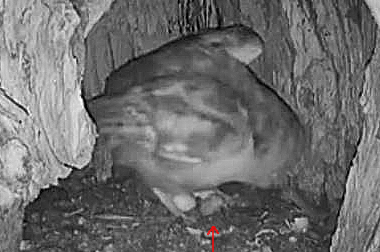Latest News and Updates from Audubon in California
California Condor. Photo: Scott Frier/USFWS
When Los Angeles was covered in wetlands. Interesting web gallery of photos showing expansive wetlands acros the Los Angeles Basin around what was then called the Ballona Lagoon.
California Secretary for Natural Resources John Laird issued a statement today regarding the Desert Renewable Energy Conservation Plan. Like Audubon California, he thinks it's a perfect lousy idea to reopen negotiations on the landmark conservation deal.:
“The 2016 Desert Renewable Energy Conservation Plan is the result of over eight years of collaborative effort and public participation involving the California Energy Commission, California Department of Fish and Wildlife, the U.S. Bureau of Land Management, and the U.S. Fish and Wildlife Service, as well as local governments, renewable energy companies, environmental groups, businesses, and citizens. Hundreds of meetings, thousands of public comments, and deep commitment of public agencies generated a Plan that provides for renewable energy production from public lands while also protecting the incredibly rich biological, cultural, recreational, and many other values of the California desert.
The Plan itself allows for modifications and course corrections, and due to the combined input, resulted in zero lawsuits. Reopening the plan is a waste of time and resources that will result in uncertainty, delay, and litigation. Reopening will stall renewable energy projects on public lands and impose major new costs on stakeholders without benefit. Instead, BLM should work proactively with the state, local governments, tribal leadership, and other stakeholders to implement the plan effectively and resolve issues with implementation as they arise.”
Fascinating study shows that California used to have a unique form of raven, but that it has long been bred out of existence. It lives on, however, in the DNA of our Common Ravens.
A new study shows that sea-level rise driven by climate change could swallow up many of the Pacific Coast's most important marshes in the next hundred years. But researchers say there's still time to do something about it. Audubon California is working hard to protect many of these areas, supporting Measure AA in the San Francisco Bay and restoring vital marshes in Sonoma Creek.

First egg hatches on Audubon Starr Ranch live nestcam: Last night saw the first egg hatching on the Audubon Starr Ranch live nestcam. According to Ranch Manager Pete DeSimone, this first chick should grow to full size and fledge in eight to eight-and-a-half weeks. Check out the live cam, and maybe you'll catch a glimpse.
Bird strike amid the Southern California fires. Our own Janine Kraus captured this amazing photo of a window showing evidence of a bird strike during the recent fires in Ojai. The residents of this home had been evacuated and returned to find this ashy image a bird attempting to escape the fires but running into this window. No further evidence of the bird was ever found.
Our newsletter is fun way to get our latest stories and important conservation updates from across the state.
Help secure the future for birds at risk from climate change, habitat loss and other threats. Your support will power our science, education, advocacy and on-the-ground conservation efforts.
California is a global biodiversity hotspots, with one of the greatest concentrations of living species on Earth.